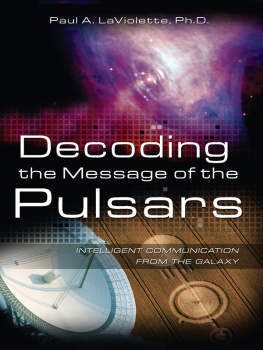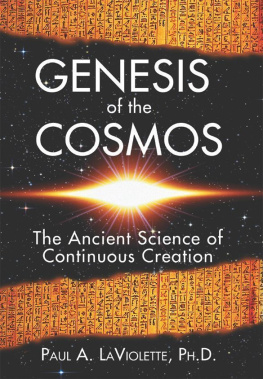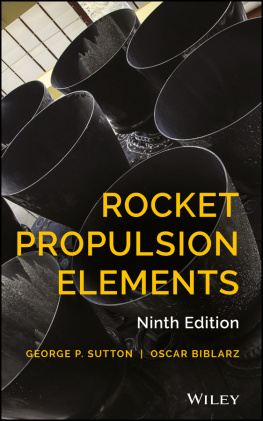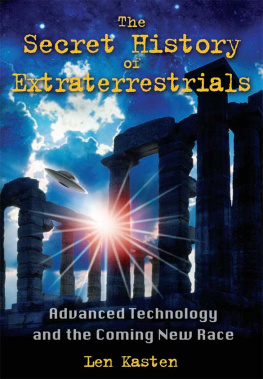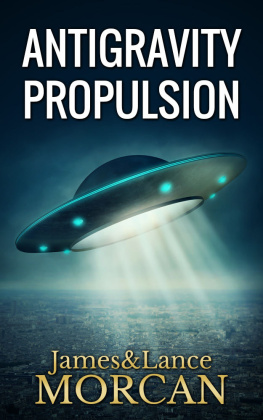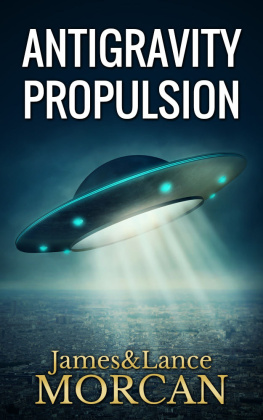
SECRETS OF
A NTIGRAVITY P ROPULSION
Paul LaViolette is one of the most interesting and innovative thinkers probing the limits and horizons of contemporary physics. In this book he takes up a challenge that many of us have thought about but could not document: the possibility of propulsion systems that practically defy gravity. His findings merit earnest consideration, debate, and discussion.
E RVIN L ASZLO, AUTHOR OF S CIENCE AND THE A KASHIC F IELD
Paul LaViolettes investigations into this most mysterious of subjects are at once fascinating and prescient.
N ICK C OOK , AUTHOR OF T HE H UNT FOR Z ERO P OINT : I NSIDE THE C LASSIFIED W ORLD OF A NTIGRAVITY T ECHNOLOGY
One of the boldest and most exciting books on gravity control to be put forward in our times. Paul LaViolette is an outstanding scientist and the first to reverse engineer the B-2s highly classified propulsion system.
E UGENE P ODKLETNOV , P H .D., P ROFESSOR OF C HEMISTRY , T AMPERE , F INLAND
Paul LaViolette has once again unearthed advanced knowledge that can change our lives. This is a landmark book to be read and discussed by anyone concerned about humanitys options for the near future.
J EANE M ANNING , A UTHOR OF T HE C OMING E NERGY R EVOLUTION : T HE S EARCH FOR F REE E NERGY
ACKNOWLEDGMENTS
I dedicate this book to my father, Fred LaViolette (19162008), who through our years had been a guiding light for me. In particular I am greatly indebted to him for the long hours he spent helping me edit this manuscript. I would also like to thank my sister, Mary, for her editorial assistance as well. Finally I would like to thank Tom Turman, Thomas Chavez, Guy Obolensky, Larry Deavenport, Jean-Louis Naudin, and others for information about their work that they graciously shared.
ANTIGRAVITY: FROM DREAM TO REALITY
1.1 TRAVELING TO THE STARS
Interstellar space travel has long captivated the imagination and longing of humankind. Indeed, we have penetrated the cosmos and walked on the moon, while breakthroughs in long-range exploration, such as the Hubble Space Telescope, bring the farthest reaches of space tantalizingly close, rekindling our desire to travel beyond our galaxy. As of yet, we are bound by the frustrating limits of conventional propulsion technology. Skeptics remind us that a spacecraft powered by even the most advanced chemical rockets would need to carry so much fuel that travel over interstellar distances would be out of the question. Alternatively, vehicles equipped with nuclear-powered ion thrusters would have a much greater range. However, the fuel requirements would be such as to make a journey of even a few light-years quite impracticalbasic physics tells us that a rocket-powered spacecraft would need a fuel mass that would far exceed the mass of the vehicle itself.
Is there a way to free ourselves of this fuel problem, using a totally different means of propulsion, one that does not require large quantities of mass to be jettisoned rearward for the craft to move forward? Imagine a spaceship that could alter the ambient gravitational field, artificially producing a matter-attracting, gravity-potential well that was just beyond the ships bow. The gravity wells attractive force would tug the ship forward just as if a very massive, planet-sized body had been placed ahead of it. The ship would begin to fall forward and, in doing so, would carry its self-generated gravity well along with it. The gravity well would continually draw the ship forward, while always staying ahead. Through such a carrot-and-stick effect, the ship could accelerate to nearly the speed of light, or maybe even beyond, with essentially no expenditure of energy other than that needed to generate the gravity well.
Is such gravity control possible? Would it be possible to construct a spaceship with small enough propulsion power requirements that interstellar travel could be achieved? The answer is yes. For the past several decades, highly classified aerospace programs in the United States and in several other countries have been developing aircraft capable of defying gravity. One form of this technology can loft a craft on matter-repelling energy beams. This exotic technology falls under the relatively obscure field of research known as electrogravitics.
The origins of electrogravitics can be traced back to the turn of the twentieth century, to Nikola Teslas work with high-voltage shock discharges, and somewhat later to T. Townsend Browns relatively unpublicized discovery that electrostatic and gravitational fields are closely intertwined. Unfortunately, the electrogravitic effect has for the most part been ignored by mainstream academics, because the phenomenon isnt anticipated by either classical electrostatics or general relativity, effectively preventing it from being taught in university courses such as physics and electrical engineering. Rather, to unlock the secrets of electrogravitics, one must delve into popular science articles, patents, and relatively obscure technical reports that once held a classified status. Perhaps the best place to begin is to review some of Browns seminal work.
1.2 THE BIRTH OF ELECTROGRAVITICS
The American physicist and inventor Thomas Townsend Brown was born in 1905 to a well-to-do Zanesville, Ohio, family. At an early age, he displayed a keen interest in space travel and dreamed of one day journeying into space himself. His discovery of the electrogravitic phenomenon occurred during his high school years, when his interest in space travel led him to toying with a Coolidge tubea high-voltage X-ray-emitting vacuum tube similar to that found in modern dental X-ray machines. Brown had the insight to mount the tube on a delicate balance to investigate whether it might produce any thrust. To his surprise, the tube moved every time it was turned on. Ruling out X-rays as the cause of this mysterious force, he traced the effect to the high voltage he was applying to the tubes plates. He concluded that the tube had moved because its gravity field had somehow become affected by the plates high-voltage charge.

Figure 1.1. Thomas Townsend Brown at fifty-three years of age. (Photo courtesy of the Townsend Brown Family and Qualight, L.L.C.)
After additional experiments, Brown eventually developed an electric capacitor device that he termed a gravitator (or, alternately, gravitor ). These units were very heavy. One version consisted of a wooden box, 2 feet long and 4 inches square, that contained a series of massive, electrically conductive plates made of lead and separated from one another by electrically insulating sheets of glass, which served as the capacitors dielectric medium (a dielectric is a substance that does not conduct electric current). Another version used a dielectric molded from a mixture of lead monoxide and beeswax encased in Bakelite. The diagram in figure 1.2, which is reproduced from Browns 1928 patent, shows yet another version made with aluminum plates and paraffin.
When energized with up to 150,000 volts of direct current (DC), Browns gravitator developed a thrust in the direction of its positively charged end. One such gravitator, which weighed 10 kilograms, was observed to generate a maximum thrust of 0.1 kilogram (1 newton), a force equal to about 1 percent of its weight. When oriented upright on a scale and energized, it proceeded to gain or lose that amount of weight depending upon how the charge polarity was applied. It became lighter when its positive end faced up and heavier when its negative end faced up.
Next page

